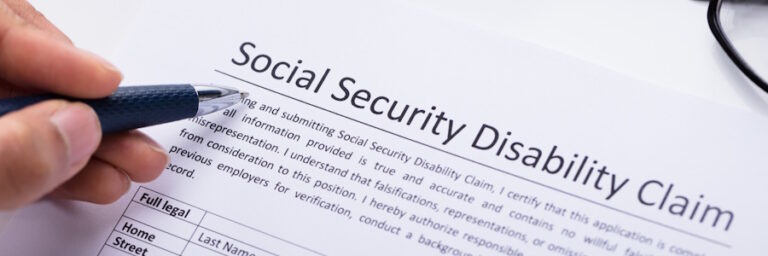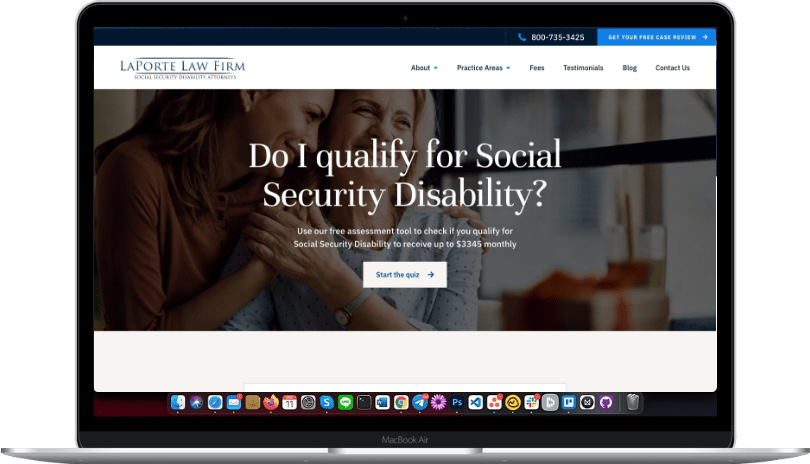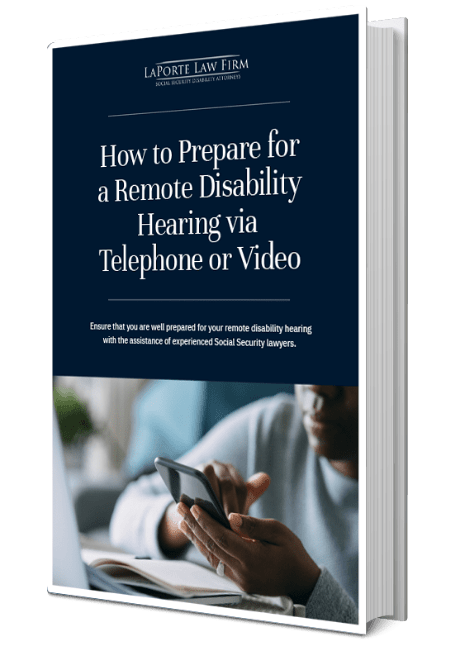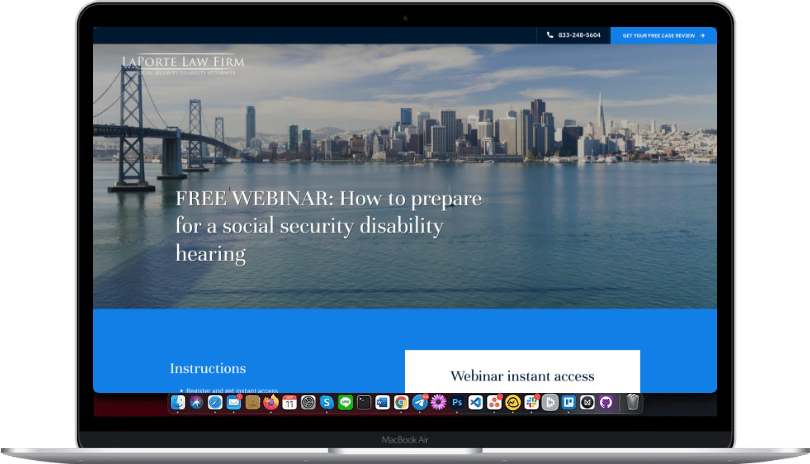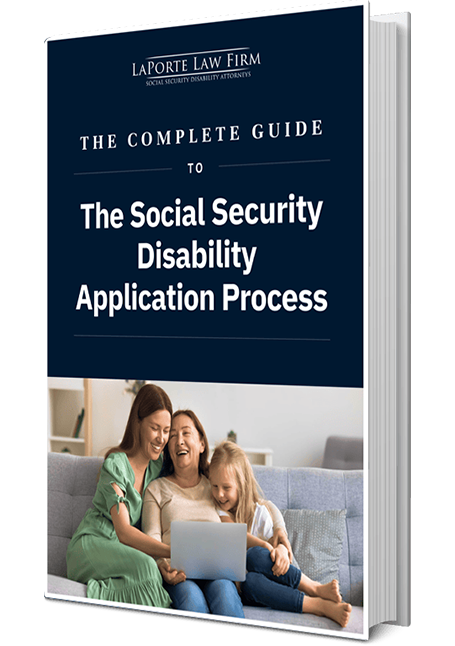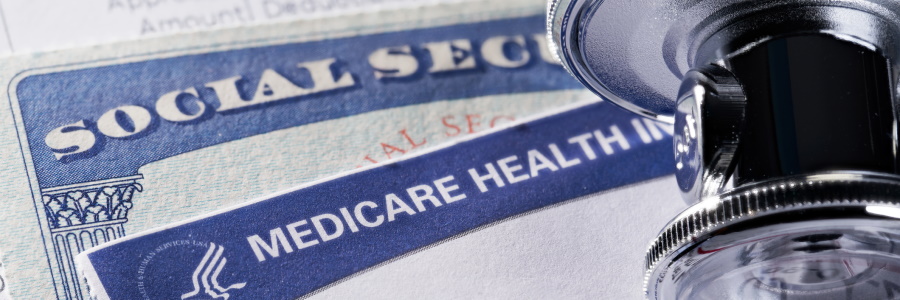
Securing Social Security Disability Insurance (SSDI) involves traversing a meticulous journey through six pivotal stages. In this brief guide, we unravel the intricate process, shedding light on each step to empower applicants with essential insights. From the initial application to the waiting period, join us in navigating the complexities of the disability application process and understanding the key signs that could indicate a favorable outcome.
What Happens During the Disability Application Process?
The disability application process has six important stages:
-
Initial application
A Social Security Disability Insurance (SSDI) applicant must ensure that their application is complete. The best way to ensure this is to apply for the disability benefit online.
Aside from being the most convenient method for submitting an application, by applying online, you can obtain confirmation OR a receipt that your application was filed after submitting all of the requested information. Sometimes mailed applications are lost by the Social Security Administration (SSA), and unless you have a return receipt, it can be challenging to prove that an application was filed. The filing date of a Social Security disability application is important because it impacts your potential past due benefits and potential medicare start date.
When applying for Social Security disability, you should make sure to perform the following:
Print out the “Reentry Number” from your application. This saves your place in case you cannot submit the entire application in one sitting.
Return the application summary. After the application is submitted, the SSA will mail you a copy of the information you submitted. You need to sign and return this summary using your wet signature in black or blue ink in the return envelope provided by the SSA. The SSA will not process your application until they receive your signed application.
Sign or electronically sign Form SSA-827. This form is known as the Authorization to Disclose Information to the Social Security Administration. It’s crucial to your case because it allows the SSA to request your medical records, a necessary step toward an approval.
Prepare bank account information for direct deposit. The SSA online application requests your bank account routing information. If approved, you can elect to receive your back pay and ongoing benefit via direct deposit.
Past 15 years of work history. Submit information about any job you have held in the last 15 years, including information regarding your job roles and work duties. A complete work history on the application allows the SSA to determine whether you could hypothetically return to any of your previous jobs, given your medical impairments.
Provide proof of residency. Be prepared to take BC/Passport/Naturalization Certificate in person to your local SSA office. The SSA cannot process your application without these documents.
Provide a list of all treating doctors’ names, addresses, and phone numbers since your date of disability. List all sources of medical records since your alleged onset date (the date you tell the SSA you became disabled from work). You will need to list the first date of treatment, last date of treatment, and the next date for each medical source. This is important because the SSA needs to know where to request medical evidence. Because the burden of proof for establishing disability is on the person claiming disability, you want the SSA to know where all the “evidence” is about your case.
Give as much information as possible. It’s crucial to submit a complete and accurate application. This avoids unnecessary delays with the SSA mailing requests for additional information.
A detailed application allows the Social Security Administration to decide the issue of disability more quickly without sending multiple follow up correspondence with requests for more information.
Claim review
Your case will be reviewed by a medical examiner once Social Security has your completed application, including information about all your medical providers, past 15 years of work history, and your signed authorization to disclose your medical records. The SSA contracts with a state agency called Disability Determination Services (DDS) that reviews your medical records. The DDS physician examiner may determine that a consultative examination is required before deciding your case. The examiner may request additional information from the disability claimant if they believe there are missing or incomplete medical records.
After conducting the review, the DDS physician examiner will determine whether your disability meets the requirements of SSA’s Listings (these are considered the “blue book,” dictionary definitions of disability). If the examiner determines that your impairments do not rise to “listing level,” the analysis does not end there. The examiner must then determine, based on your medical records, whether you could hypothetically return to your past work or other work in the national economy.
Work history evaluation
The SSA reviews information about your “past relevant work,” as stated on your application. Past relevant work is any work you performed in the past 15 years for long enough to learn the basic job functions. The SSA determines whether you can return to any of your past jobs given the work limitations from your medical impairments. If not and you are over 50 years old, the SSA then determines whether you have transferable skills toward other, similar work. If you’re under 50, the SSA determines whether you could do any type of full-time work in the national economy, even the easiest type of job.
-
Medical examination
The DDS examiner may determine that an additional examination is required. This examination will be performed by a Social Security-appointed medical examiner. The examination is at no cost to you. The examiner will perform an in-person physical or mental examination, then write a report of the examination with their opinion regarding your maximum residual functional capacity (the type of work the examiner believes you can perform, if any).
It’s important to note here that the consultative examiner does not make the ultimate determination about your disability. Rather, the DDS physician will make the initial application determination, since they are familiar with SSA rules and regulations regarding disability. For example, if you have only heavy-duty work experience such as in construction, and the consultative examiner performs an examination finding that you can perform sedentary work, the outcome of your case will depend on your age. If you are over age 50, this consultative examination is in your favor.
If the DDS examiner agrees with the consultative examiner that you can only perform sedentary occupations, your medical-vocational profile arguably grids favorably under the SSA Grids Rules. The SSA Grids Rules are complex, but in general, they consider your age, education, work experience, and maximum residual functional capacity, with certain outcomes that direct a finding of disability based on your medical-vocational profile. Occasionally, the conclusions of the medical examiner are actually in your favor, even if they appear to deny your case on the basis that you can perform sedentary or light duty work. This is a good reason to attend any scheduled examination.
Decision
Once the Social Security state agency examiner has all of your medical records and, if applicable, the written report from the consultative examiner, they will make a decision about whether your impairments meet the definition of disability under Social Security regulations. If approved, your case is “allowed” under SSA rules. The examiner will also determine whether your disability began on your alleged onset date or on a different date.
If you receive a Social Security decision that states you are eligible for Social Security disability, it’s important to read the entire letter. Some decisions are “partially favorable,” finding that you meet the medical rules for disability, but on a different date than the date you chose for your alleged onset date. If you receive a partially favorable decision, you have a right to appeal the decision. Note that, when you appeal a partially favorable decision, you are also appealing the favorable portions of the decision too. You will continue to receive your benefit while the appeal is pending, but there is a small chance that your case is denied by an administrative law judge (ALJ).
In the event an ALJ denies your case for the entire period of disability, you will be asked to pay back all of the benefits you received pending your appeal. However, if you do not appeal the partially favorable decision, the determination will become final, and you may lose your right to potential past due benefits and a potential later medicare onset date.
Waiting period
If your application is approved, there’s a mandatory five-month waiting period before disability benefits begin. It’s important to note that the five-month waiting period does not begin from the date of the favorable determination. The five-month waiting period begins the month of your “established onset date.” The established onset date is the date that the SSA agrees your disability began. Therefore, the waiting period impacts the number of past-due months of entitlement for your lump sum retroactive payment. The law allows the SSA to pay retroactively 12 months prior to the date of your application, at most.
For example, assume you file for Social Security disability benefits on January 1, 2024, with an alleged onset date of June 1, 2021, when you stopped working due to a disability. When the SSA approves your case, your first entitlement month for a retroactive payment is January 2023, 12 months prior to the application date. Under this scenario, the five-month waiting period does not apply to your case because you were found to have a disability that began over 17 months prior to the date of your application.
However, assume you file on January 1, 2024, but the SSA finds that your disability began on June 1, 2023. Under this scenario, your first retroactive month of entitlement is December 2023, five months after your established onset date of June 2023.
As you can see, choosing an appropriate alleged onset date is important because it impacts your potential past due benefits.
Signs That You Will Be Approved for Disability
The following seven signs indicate that your application for SSDI will be approved.
Sign 1: You meet the SSA's definition of disabled
- Step 1: Are you working? If so, SSA issues an initial step 1 denial. The severity of the alleged disability will not be considered. If you are not working, the SSA proceeds to step 2.
- Step 2: Is your condition severe? A severe condition impacts your ability to perform basic work-related activities for at least 12 months. If the SSA agrees that your symptoms are severe, the case proceeds to the next step.
- Step 3: Does your condition meet the requirements of Listed Impairments? In general, a listing level impairment is a high bar to clear since the medical criteria usually require strict objective medical findings in the treatment evidence. If the SSA finds that you meet one of the medical listings, your case is approved automatically. If not, the SSA moves on to step 4.
- Step 4: Can you return to your past work? Past relevant work is any job you’ve performed in the past 15 years. If you can return to your past work, a claim for disability is denied at step 4. If not, the claim proceeds to step 5.
- Step 5: Can you do any other type of work in the national economy? This is a complicated hurdle to clear for people under 50 who are applying for disability.
If your condition prevents you from performing any type of full-time work available in the national economy on an eight hours per day, five days per week basis, then your case has a stronger likelihood of approval. Also, if you have a condition that meets the SSA’s strict disability requirements under their Listings, this is a positive indication of approval.
Sign 2: You have sufficient work credits
Work credits are earned by working and paying Social Security taxes. The number of work credits needed for Social Security Disability Insurance varies with age. However, generally, you need to have earned at least 40 credits, 20 of which were earned in the last 10 years ending with the year you became disabled. If you have sufficient work credits, it means you have contributed enough into the Social Security system to qualify for benefits.
While having sufficient work credits does not guarantee a successful outcome on your disability case, it is a critical initial factor in any disability case, since the SSA cannot process your claim for SSDI benefits unless you have sufficient work credits.
Sign 3: Your condition is listed in the SSA's Blue Book
If your condition meets Social Security’s medical Listings, this is a strong sign your case will be approved. Here is a comprehensive list of the SSA Blue Book Listings. If your medical condition meets a listing, then your case will be approved at step 3 of the SSA sequential evaluation (see above). Social Security does not consider your past relevant work or whether you can perform other types of work, if your medical condition meets the requirements of a listing.
Sign 4: You can't perform your previous work or any other work
If your condition does not meet a medical listing, Social Security must evaluate whether you can still perform your past relevant work. At this step, the burden of proof is on the applicant. If Social Security agrees that you cannot perform any of your past relevant work due to your impairments, then the burden of proof shifts to the SSA — it’s now up to them to prove that there is other work in the national economy that you can perform. Once you reach age 50, the SSA must consider whether you have transferable skills to this other work.
Sign 5: Your application is complete and accurate
While a complete and accurate application does not guarantee an approval, it does put you in the best position to succeed at the application stage without further appeals. A complete application means you have filled in all the necessary information required in the disability application form. A complete application also saves time by avoiding unnecessary follow-up letters from Social Security with requests for additional information.
When the SSA sees evidence in your application or records that you see an unlisted medical provider, the analyst must then contact you to confirm the other source of medical records and request those additional records. This adds delay. Similarly, if the SSA sees evidence of income after your alleged onset date, the analyst will send you a work history questionnaire asking for an explanation of this income.
While these instances are common and not necessarily a negative indicator of your approval odds, they can be avoided by taking the extra time to submit all information on the application. A complete application ensures that the SSA obtains all of your relevant medical evidence, a key step toward approval.
Sign 6: You have a terminal or critical condition
Some conditions are so serious that Social Security fast-tracks the application and approval process. These conditions are listed under the SSA’s Compassionate Allowance Listings. In general, a person with a condition that meets the criteria for a compassionate allowance will be automatically approved when the SSA confirms that the person is not working and submits evidence of the diagnosis. If you have been diagnosed with a compassionate allowance condition, you should upload confirmation of your diagnosis with your application to further expedite your case. The SSA’s application process for a compassionate allowance is less rigorous and does not require the submission of more detailed information such as the 15-year work history.
Sign 7: You have legal representation
While having an attorney cannot guarantee a successful outcome, retaining a lawyer for your Social Security disability case does improve your chances of approval, especially at the hearing stage before an administrative law judge. Most disability attorneys work on contingency, meaning they do not get paid unless the case is approved. Due to the nature of a contingency fee arrangement, disability attorneys only represent clients with meritorious cases.
It should be noted that even the most experienced disability attorney gets it wrong sometimes. If you are unable to retain a disability attorney, this fact alone does not mean you are ineligible for disability benefits. Sometimes the attorney does not have all the facts and evidence in front of them when deciding whether to take a case. You should seek a second opinion and, if necessary, obtain all of your relevant medical records prior to your consultation with an attorney.
FAQs
If approved, Social Security will send you a letter stating that you meet the medical standards for disability.
Conditions that do not last 12 months are not considered by Social Security. Drug addiction and alcoholism are also not considered disabilities by Social Security standards.
Primarily through your medical records. It is important to stay in treatment and to pursue all recommended treatments and referrals from your doctors.





